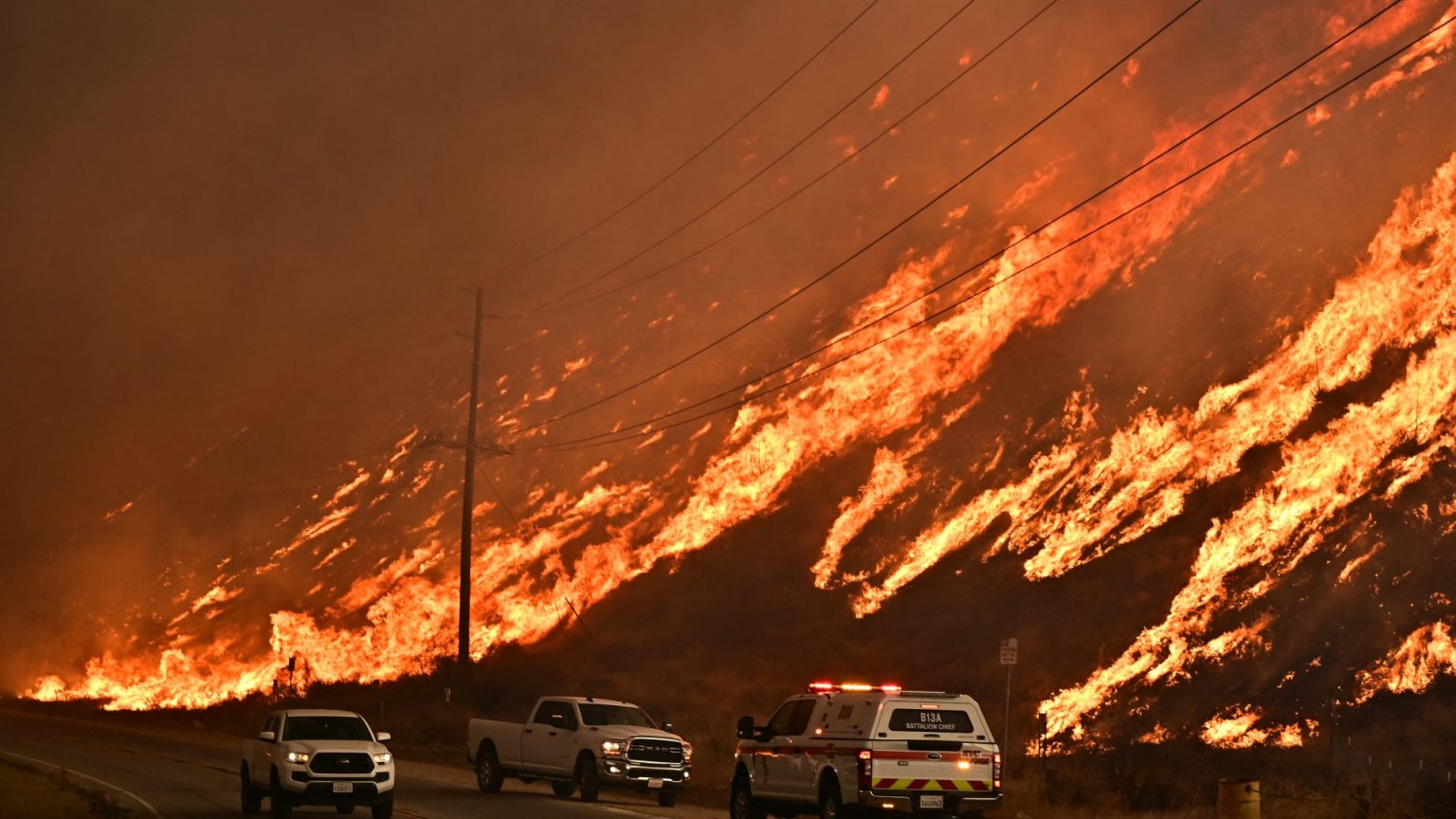The Hughes Fire, ignited near Castaic Lake, California, exploded from a manageable 500 acres to a terrifying 5,000 acres in just two hours, prompting mass evacuations and dire warnings from fire experts. Jagged flames tore across the dry hillsides, painting the sky with thick plumes of smoke, creating a scene of imminent danger and forcing nearly 20,000 residents to flee their homes. The rapid growth and intensity of the fire evoked comparisons to a nuclear explosion from wildfire experts, highlighting the extreme fire risk currently plaguing Southern California. This new inferno adds another layer of crisis to a region already grappling with the lingering Eaton and Palisades fires, which have been burning for weeks.
Fire crews battled the Hughes Fire from both ground and air, fighting desperately to contain the rapidly spreading flames, which were consuming an area equivalent to 23 football fields every minute. The fire’s location, coupled with the dry conditions and strong winds, created a perfect storm for rapid growth and extreme fire behavior. Early reports from fire services suggested the potential for a massive disaster, leaving residents and officials on high alert. The speed and ferocity of the fire created a sense of urgency and panic as people rushed to evacuate, leading to congested roads and widespread disruption.
One resident, Kayla Amara, drove to a friend’s house in the evacuation zone to retrieve belongings, only to find the fire growing exponentially larger. She and her neighbors frantically hosed down their properties, hoping to protect them from the approaching flames. The scene was chaotic, with police cars racing through the streets and flames engulfing trees on the nearby hillsides. The constant threat of wildfires in recent weeks had already created a sense of anxiety and stress for residents, and the Hughes fire, hitting so close to home, amplified these feelings dramatically.
The cause of the Hughes Fire remains under investigation, but the prevailing dry conditions and strong winds undoubtedly contributed to its rapid spread. Meteorologists warned of continued critical fire conditions across Southern California, echoing a now-familiar refrain. The Eaton Fire, east of Los Angeles, was nearing containment, while the larger Palisades Fire to the west remained a significant concern. The Hughes Fire, however, presented a new and immediate threat, demanding the full attention of fire crews and emergency services.
The impact of the Hughes Fire extended beyond immediate evacuations. The Angeles National Forest, a popular recreational area spanning 700,000 acres, was closed to visitors as firefighters from the forest service joined the battle against the blaze. Schools in the affected areas were closed as a precautionary measure, further disrupting daily life. The fire’s proximity to Castaic Lake, a vital reservoir supplying water to the Los Angeles area, added another layer of concern.
The I-5 Freeway, a major artery in the region, was closed between Grapevine Road and State Route 126, exacerbating the traffic congestion caused by evacuations. Authorities worked to maintain order and calm amidst the chaos, while residents further south in Los Angeles braced for potential rain and the return of some evacuees from the Palisades and Altadena areas. The focus shifted to cleanup and recovery efforts in the burned areas, with the Mayor of Los Angeles issuing an executive order to expedite the process and mitigate the damage from fire-related pollutants. Meanwhile, law enforcement continued to investigate arson as a potential contributing factor to the recent spate of wildfires, with several arrests made in connection with intentionally set fires. One suspect admitted to starting a fire because he “liked the smell of burning leaves,” adding another layer of complexity to the ongoing crisis.




